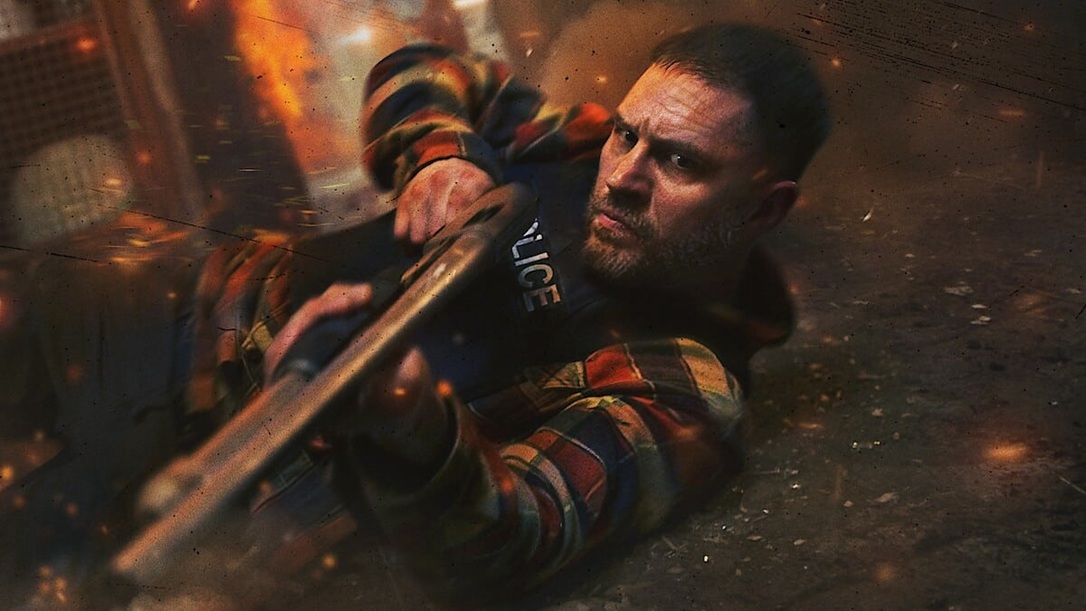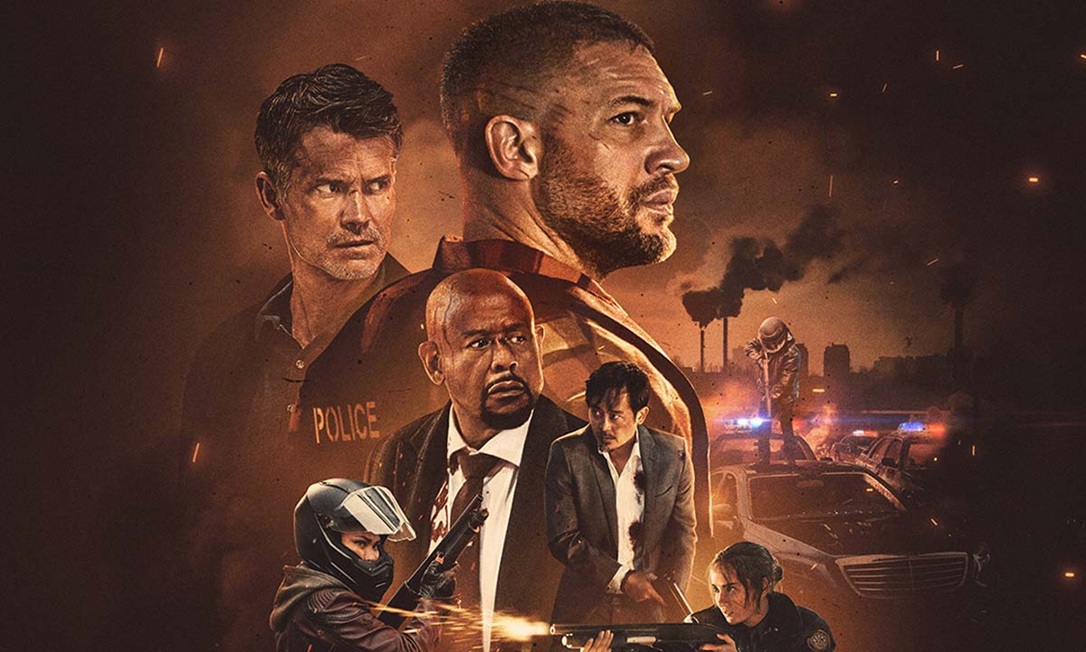A Predictable Action Movie Bolstered by Gareth Evan's Flair
Summary
Havoc delivers intense action and a standout performance by Tom Hardy, but suffers from a predictable plot, underdeveloped characters, and a lack of emotional depth, ultimately feeling more like a sensory overload than a memorable experience.
Overall
-
Plot
-
Narrative
-
Acting
-
Characterization
-
Direction
-
Pacing
Certain collaborations create excitement. When director Gareth Evans teamed up with actor Tom Hardy for a new film, expectations were understandably high. Evans is known for intense action movies like The Raid, while Hardy is famous for his brooding, physical performances. Many hoped for a modern action classic that would blend Hardy’s grit with Evans’s talent for visceral fight scenes. The film, Havoc, debuted on Netflix, a platform often associated with creative freedom. Our review of Havoc analyzes how it stacks up as an action movie.
Now that I’ve seen Havoc, I recognize a common issue with many streaming films today: a gap between high potential and somewhat empty results. The movie features intense violence that is carefully planned and undeniably brutal. However, this action is tied to a thin, unoriginal story. Because of this, the spectacle often lacks lasting impact beyond the initial shock.
Gareth Evans made a name for himself in the action genre. The Raid: Redemption felt like a jolt of energy. Its premise was simple—a SWAT team trapped in a dangerous building—but the execution was remarkable. Evans showcased the Indonesian martial art Pencak Silat with incredible speed and realism. The violence felt tangible, unlike in many slicker Hollywood productions. The camera wasn’t just watching; it moved with the action, making viewers feel part of the chaos.
The Raid 2 expanded the story into a complex gangland saga. It was ambitious, but some felt it lost the sharp focus of the first film. The plot sometimes seemed to exist only to connect even more elaborate and exhausting action scenes. Evans also directed Apostle, a folk horror film. This showed his skill in building atmosphere, although action remained an important component.

In Havoc, Evans seems to try combining different elements. He blends the large crime-story style of The Raid 2 with Tom Hardy’s star power. He also adds Western influences, partly due to the supporting cast, including Forest Whitaker and Timothy Olyphant. However, the result feels more like a strained compromise than a natural next step. The raw energy of The Raid feels toned down here, replaced by violence that, while still extreme and technically complex, sometimes feels more staged and less impactful.
Critics have described Evans’s direction in different ways. Some called it “curatorial,” as if guiding viewers through planned destruction. Others saw it as an “operatic ballet” of violence. But harsher critics disagreed. They felt that despite the high volume of action, it lacked the “balletic grace” or personality found in films by masters like John Woo. They argued it became a repetitive collection of clichés—just chaos without real artistry.
The story supporting this action doesn’t help. The film is set during Christmas in a dark, rainy city. Although convincingly built in a Cardiff studio, this unnamed city looks gritty but lacks a unique identity. The plot itself feels like a collection of familiar crime thriller elements.
Tom Hardy plays Walker, a homicide detective haunted by past mistakes that cost him his family. He operates in murky territory, sometimes working for Lawrence Beaumont (Forest Whitaker). Beaumont is a powerful figure running for mayor on an anti-crime platform, but he has his own secrets. He also wants to reconnect with his estranged son, Charlie (played by Justin Cornwell).
The plot kicks off with a familiar event: a deal gone wrong. Charlie and his girlfriend Mia (Quelin Sepulveda) are wrongly blamed for the death of a local Triad boss’s son. This makes them targets for two groups. First is the vengeful crime syndicate, led by the dead man’s fearsome mother, Clarice (a chilling Yeo Yann Yann), and her top assassin (played by Michelle Waterson). Second are Walker’s former colleagues, a corrupt narcotics unit led by the suspicious Vincent (Timothy Olyphant).
Walker feels bound by old loyalties and perhaps a guilty conscience. Beaumont asks him to find Charlie and Mia and get them out of the city safely. Walker takes on this dangerous mission. He gets reluctant help from his new partner, Ellie (played by Jessie Mei Li). She is initially underestimated but proves resourceful and holds onto her ideals in a corrupt world.
If this plot sounds familiar, that’s because it is. The screenplay, written by Evans, follows predictable paths. We see standard characters: the troubled cop seeking redemption, the powerful father with a wayward child, the ruthless female crime boss, the dirty cops, the innocent couple caught in the middle, and the one good officer trying to stay clean. Their motivations often seem shallow, mainly serving to push them towards the next violent clash. The story offers few surprises and doesn’t explore its themes deeply. Ideas like corruption, loyalty, and redemption are mentioned, especially in Walker’s opening voiceover about choices, but these themes remain underdeveloped in a film focused on action and forward momentum.
Tom Hardy is undeniably the film’s anchor. He brings his usual intense physicality and simmering presence to the role of Walker. He convincingly portrays a man capable of extreme violence but weighed down by its consequences. Whether fighting, enduring explosions, or just staring hauntingly, Hardy holds the screen. Still, even his strong presence struggles to give depth to this standard character type. It often feels like watching Hardy skillfully play the idea of a grizzled detective, rather than meeting a truly unique character. His charisma is clear, but his talents seem somewhat limited by the conventional script.

The supporting cast includes many talented actors, but they face similar limitations. Forest Whitaker brings his usual authority to Beaumont, capturing the politician’s hypocrisy, but the role lacks complexity. Timothy Olyphant is effective as the untrustworthy Vincent, hinting at his character’s corruption, but he has limited screen time until the final showdowns. Jessie Mei Li stands out as Ellie, adding needed idealism and competence, creating some interesting chemistry with Walker. Luis Guzmán makes a brief but welcome appearance. Despite these capable performers, many characters feel like simple plot devices used to drive the action, not fully formed individuals. The criticism that the film wastes its talented cast feels largely accurate.
Havoc focuses most of its energy on its action sequences. Evans creates several large set pieces to showcase his style of controlled chaos. An early car chase uses stolen washing machines as weapons, setting a tone of destructive absurdity. A long fight scene in a nightclub brings multiple groups into conflict: Walker trying to rescue Mia, dirty cops interfering, and waves of gangsters attacking with guns and knives. This complex scene shows Evans’s skill in managing chaos, with the camera moving frantically through the fight. The climax takes place at a remote cabin, turning into a lengthy siege. Gunfights eventually lead to brutal close-combat involving hooks, knives, and fists, all starkly contrasted against blood-stained snow (the Christmas setting feels mostly incidental).
Technically, these scenes are often impressive in their brutality. The choreography is detailed, the violence feels harsh, and the scale of destruction is significant. Cinematographer Matt Flannery uses an active camera that pulls viewers into the action. Aria Prayogi’s score creates a moody, driving atmosphere, sometimes using effective synth tones.
However, opinions split on whether these scenes have lasting impact. Some praise the precision and energy. Others find the relentless violence tiring and repetitive. Critics also pointed out flaws in the film’s visual style, describing it as having an unconvincing “faux-gritty” digital look. Complaints about unrealistic CGI gore also surfaced, potentially making the violence feel less real and more artificial than in Evans’s earlier work. Comparisons to director John Woo often concluded that Havoc matches the quantity of violence but lacks the fluid style and emotional depth that made Woo’s best films memorable.
So, what is the final verdict on Havoc? The film seems caught between its director’s talent for extreme action and the needs of a more conventional streaming thriller. It certainly delivers intense, complex, and brutal action sequences. This will likely satisfy viewers looking specifically for that kind of visceral thrill. Tom Hardy anchors the film with his strong presence, despite the character’s limitations.
However, the film’s heavy reliance on a formulaic plot and underdeveloped characters holds it back. The action itself, while technically skilled, has been criticized for lacking the grace of genre classics or the raw power of Evans’s own previous films. It has also been criticized for sometimes relying on weak digital effects.
Watching Havoc left me with mixed feelings. I admired the technical skill and audacity of the action scenes and the commitment of the actors, especially Hardy. But I was frustrated by the predictable story, the lack of character depth, and the sense that the extreme violence often felt empty, disconnected from real emotional stakes. The film provides a sensory overload but rarely engages on a deeper level.
Havoc seems designed for a specific audience that craves non-stop, brutal action, and it delivers that relentlessly. But in doing so, it sacrifices the nuance and character development that could have made it more memorable. As one critic suggested, it risks fading quickly into the vast library of streaming content—momentarily exciting but ultimately forgettable. It showcases destructive spectacle but leaves you wondering if there should have been more substance underneath the surface.







